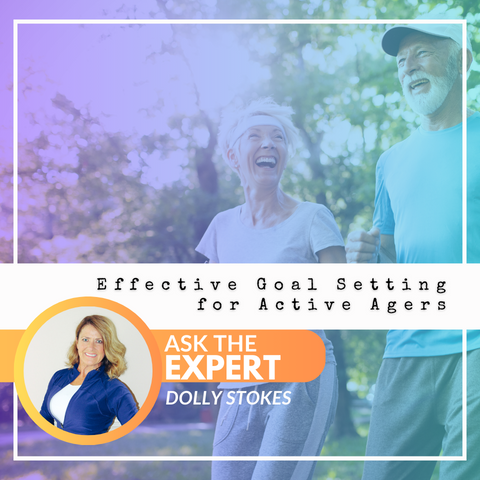Submitted by Melissa Vidito on

by: Dolly Stokes, FiTOUR®
Are you using the SMART goal setting strategy with your clients over the age of 50? If you are, you may want to re-think and move to a different form of goal setting.
While the SMART approach is a tried-and-true method for setting goals, you may want to consider including other components as part of your goal setting strategy with older clients.
Generally, clients under the age of 50 seek out the services of a fitness trainer to focus on aesthetics such as losing weight and improving muscle tone. However, the motivation of your clients over 50 may be more focused on maintaining high levels of function and high quality of life than aesthetics or weight loss.
Due to this paradigm shift, the goals of your older clients may be much different than the goals they had 20, 10, or even five years earlier.
Also, the diversity in the older adult population translates into some having specific athletic event goals, others having goals to keep muscles and joints healthy so they can enjoy fitness activities, while others want to focus solely on being able to live independently – just to name a few.
Due to the wide range of motivational factors that can be encountered with older adults, it may be more effective to ask “Why?” and work from there when it comes to goal setting.
To answer the question “Why?” it is helpful to understand the difference between “wellness” and “fitness”.
Wellness is focused on overall health, whereas fitness is focused on physical fitness and health.
The Eight Dimensions of Wellness (EDW) explore the concept of overall health and has been found to be a useful tool to help older individuals set their goals. These concepts may help your older clients develop their own definition of wellness which can lead to setting specific goals:
-
Physical Wellness: centered around living a healthy lifestyle for a long, full, and happy life.
-
Intellectual Wellness: recognizes creativity and encourages study.
-
Spiritual Wellness: expanding a sense of purpose and meaning.
-
Emotional Wellness: interaction between mental and emotional health, and a sense of well-being.
-
Social Wellness: relationships and how we interact with others.
-
Occupational/Vocational Wellness: use skills/talents to give life purpose.
-
Financial Wellness: ability to fully meet financial obligations, feeling secure in financial future and making choices that allow enjoyment of life.
-
Environmental Wellness: incorporating nature to provide a sense of peace and wellness.
The FiTOUR® Active Aging Primary course provides a workbook specifically designed to help your clients take an in-depth look at the EDW and create their own personal wellness profile and goals.
Using a tool such as the EDW workbook may provide insightful information which can help you design programming that will reflects a client’s individual concept of “wellness” and that will also provide specific strategies to reach their goals.
So, when you are helping your older clients set goals, encourage goal setting that begins from a wellness standpoint. Using the concepts of the EDW with older clients instead of the SMART approach to goal setting may provide you with a more in-depth and insightful view into a client’s motivational factors which, in turn, may provide a better understanding of the individual goals they hope to achieve.
Take advantage of this SPECIAL DISCOUNT for the FiTOUR® Active Aging Primary or Advanced courses today!
Dolly Stokes has been a certified professional fitness trainer for over 30 years. She has been a FiTOUR® ProTrainer since 2002 and has authored 11 FiTOUR® courses including the Active Aging Primary and Advanced courses. Dolly and her husband, Jeff, own Stokes Method Studio in Fairhope, AL where Dolly specializes in functional and corrective exercise.
